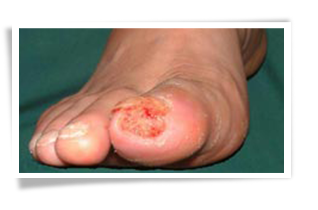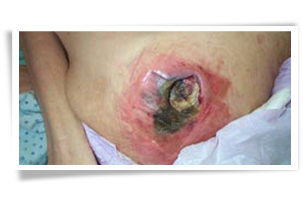A chronic wound is a wound that fails to heal within a six to twelve week period of best clinical practice. (Source 2) They are a challenge to both healthcare professionals and patients because they last along time causing a loss of body image and make the person more susceptible to infection. Several factors can impact the normal healing process such as infection, necrotic tissue, impaired tissue perfusion and steroids can all contribute to non-healing wounds. (Source 3)
Chronic wounds can occur anywhere on the body including the lower extremities. They are commonly referred to as diabetic foot ulcers , venous stasis ulcers and pressure ulcers. Chronic wounds fail to progress through an organized, orderly and timely sequence of wound repair. The patients involved may have other pre-existing medical conditions such as diabetes mellitus that could contribute to the non-healing, chronic wound.. It is important to determine the underlying etiology of the chronic wound and identify any underlying factors that interfere with the healing process such as malnutrition, poor glucose control, excessive pressure to an area, anemia and persistent edema. Elderly patients who are experiencing a chronic wound may have multiple medical conditions that necessitate a non-surgical approach to wound healing Acceleration of wound closure is important for individuals with chronic wounds because they are at risk for infection, and these wounds can interfere with activities of daily living.
The common types of chronic wounds are as follows:










